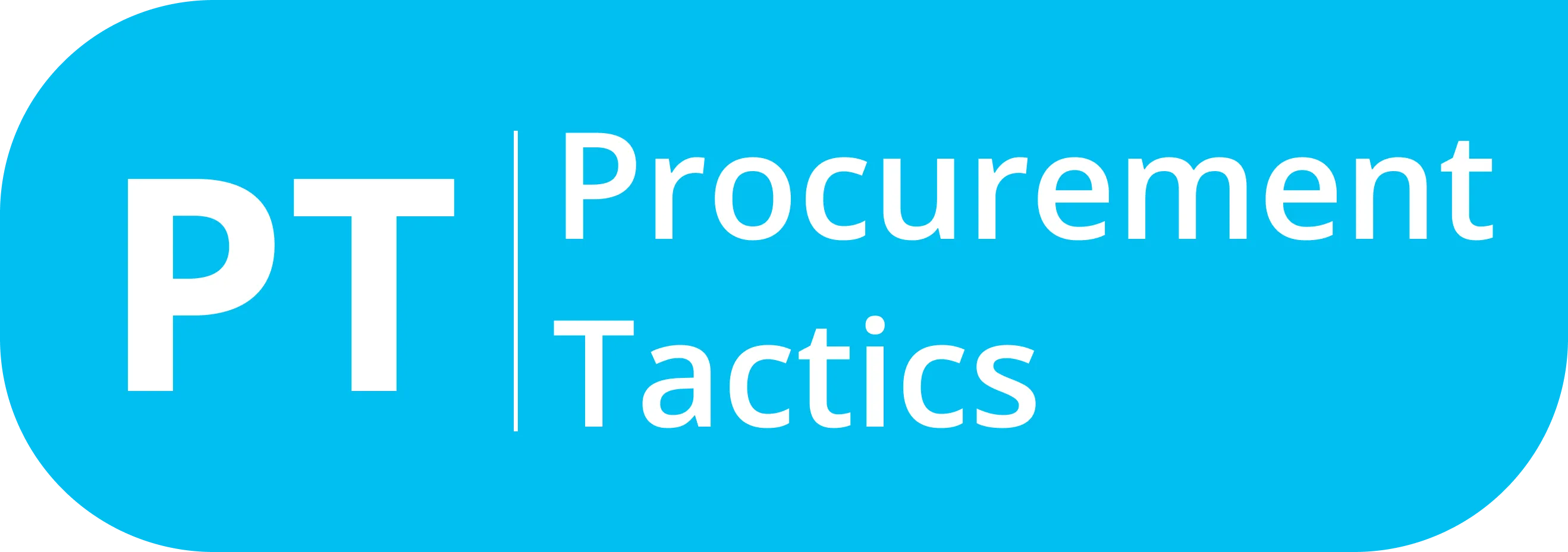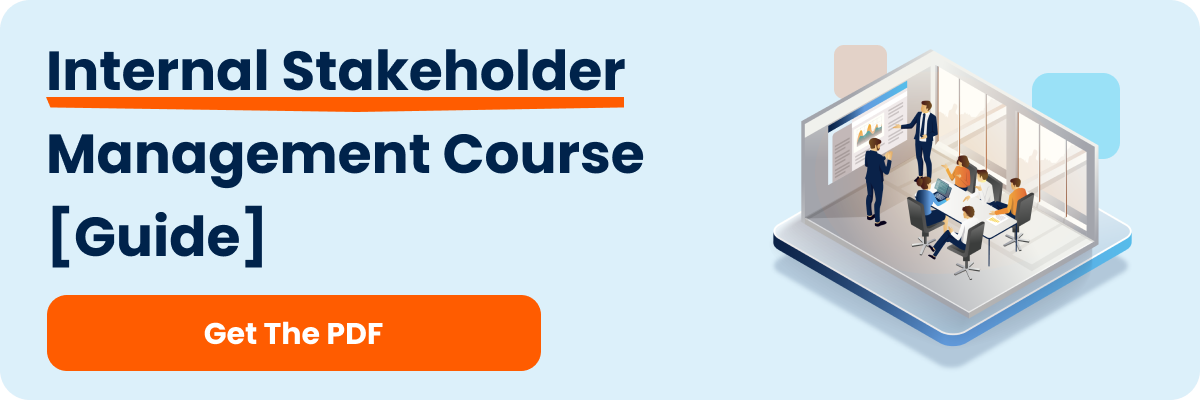Written by Marijn Overvest | Reviewed by Sjoerd Goedhart | Fact Checked by Ruud Emonds | Our editorial policy
Stakeholder Management in Procurement — Definition + Free Template

As taught in the Internal Stakeholder Management Course / ★★★★★ 4.9 rating
Table of contents
- What is Stakeholder Management in Procurement?
- Why Internal Stakeholder Management in Procurement Matters
- How to Identify Stakeholders’ Needs in Procurement
- What is Stakeholder Evaluation and Performance Management
- Stakeholder Management Templates
- Common Challenges and How to Fix Them
- Conclusion
- Frequently asked questions
- Stakeholder management in procurement is the practice of partnering with internal and external stakeholders so sourcing decisions reflect business priorities and create measurable value.
- It treats internal teams as co-owners: involve them early to define needs, risks, and success criteria, and to co-create supplier choices.
- Done well, it blends procurement expertise with stakeholder insight to speed decisions, reduce surprises, and improve outcomes across the business.
What is Stakeholder Management in Procurement?
Stakeholder management in procurement is the process of building strong, trust-based relationships with colleagues and partners so strategies are realistic, compliant, and aligned with business goals. Procurement success depends on collaboration.
Even the most experienced professional cannot deliver long-term value alone. Procurement teams work across the organization with finance, legal, marketing, operations, and R&D to align goals and make informed sourcing decisions.
A stakeholder is any person or group that affects or is affected by your work. External stakeholders include suppliers, regulators, and industry partners. Internal stakeholders guide what matters for the business and ensure procurement plans fit organizational reality.
Why Internal Stakeholder Management in Procurement Matters
Internal stakeholder management (ISM) is how procurement partners with Finance, Legal, R&D, Marketing, Operations, and end users to align needs, co-design solutions, and move from a back-office executor to a value-driving advisor.
When ISM is strong, you get tangible benefits: faster decisions because stakeholders are involved from the start; better solutions through cross-functional ideas; lower risk with early input from Legal/Quality; and fewer delays or rework because expectations are clear and shared.
Procurement’s impact goes beyond cost. It now touches innovation, sustainability, market position, risk, and customer experience.
The common blockers are simple: procurement gets invited too late, teams chase different KPIs, trust, and soft skills are thin, email replaces real conversations, and many colleagues do not see procurement’s value.
Treat internal teams as partners. Involve them early, tailor your message to their influence and interests, and earn trust through fast responses, clear updates, and empathy.
How to Identify Stakeholders’ Needs in Procurement
Procurement professionals often focus on project goals, budgets, or timelines, but real success depends on how well these goals align with the business needs of key stakeholders.
If there’s a disconnect between what procurement delivers and what stakeholders expect or require, the result is often misalignment, poor adoption, and missed value. That’s why it’s essential to go beyond assumptions and actively capture stakeholder needs.
Move beyond assumptions and capture what matters to each group. Here’s a helpful tool to capture stakeholders’ needs: the Stakeholder Needs Capture Template. Use the template included below to turn conversations into an actionable record. Follow this simple flow and fill the template as you go:

1. Pick the group and focus the conversation.
Name the stakeholder group (for example, Finance, Operations, R&D) and the topic (for example, cost control, supplier selection, process improvement).
2. Capture business needs and set priority.
Ask what they are trying to achieve, write it in plain language, and mark each item High/Medium/Low in the template.
3. Explore pain points.
Note bottlenecks and past frustrations (data gaps, unclear ownership, tool limits) so you can design around them.
4. Define what good looks like
Record clear success criteria from their perspective so expectations are explicit early.
5. Identify gaps and risks.
Document blockers to the ideal state (missing data, limited alignment, legacy systems, policy constraints).
6. Clarify support required.
List needed resources: people, budget, tools, training, or executive sponsorship.
7. Map interdependencies.
Capture other teams, systems, or processes this work relies on to prevent surprises later.
8. Agree next steps and owners.
Close with specific actions, owners, and dates, then share a short recap from the template.
9. Close the loop.
After interviews or surveys, send a brief summary of what you heard, decisions taken, and where you still need input.
Put it into practice: run two short interviews (or one interview and a quick survey), complete the Stakeholder Needs Capture Template, and update your engagement plan. Even small insights like preferred update cadence or must-have supplier criteria reduce friction and speed decisions.
What is Stakeholder Evaluation and Performance Management
It is not enough to finish tasks. You need to know whether outcomes meet expectations and how the work was delivered.
Stakeholder evaluation and performance management is the way procurement checks whether work is meeting expectations, how it was delivered, and where to improve, using shared goals, clear KPIs, and regular reviews with stakeholders.
Using the SMART Framework, with a template already provided below, you can track a balanced set of KPIs: quantitative indicators like cycle time, adoption, and savings, and qualitative indicators like stakeholder satisfaction and usability.
Make data visible in shared dashboards and standardize inputs so measures are trusted. Review metrics with stakeholders regularly, acknowledge wins, diagnose issues, agree on actions with owners and dates, and monitor follow-through. Treat this as a continuous loop so collaboration improves over time.
Stakeholder Management Templates
Use these lightweight templates to move from intent to execution; identify the right people, capture what they need, and prove impact.
1. The Stakeholder Empathy Template
One of the keys to effective internal stakeholder management is empathy, seeing the situation from the stakeholder’s point of view. This short template helps you step into their shoes and reflect on what matters most to them. Answer questions:
Before presenting an idea, requesting support, or starting a collaboration. You must understand what your stakeholders are facing and what they value. Then, you’ll be able to frame your message in a way that shows you’re on their side, not just pushing your own goals.
2. Project Engagement Planner
When thinking about a project you’re currently planning or just starting. Before diving into the details, ask yourself: Who should be involved, and when? Proactive stakeholder engagement from the start can make all the difference. We’ve created a simple template to help you reflect on the following questions:
3. SMART Objective Builder
Use for Stakeholder evaluation and performance management.
Purpose: Turn vague ambitions into measurable targets everyone can track.
Use when: Agreeing on outcomes with stakeholders.
This template helps you define clear, focused, and realistic goals for your procurement or stakeholder projects using the SMART method. For each part, guiding questions help you break down what exactly you want to achieve, how you’ll measure success, whether the goal is realistic, why it matters, and by when it should be completed.
Common Challenges and How to Fix Them
1. Late involvement of procurement
Procurement is often brought into projects after key decisions have already been made. One of the biggest frustrations we encounter, based on our experience, is that procurement arrives too late, when decisions have already been made. Then it’s just firefighting. When that happens, procurement loses its ability to act strategically.
2. Misaligned goals and KPIs across teams
Different departments often measure success in different ways. You might be measured on savings, while your stakeholder cares more about speed or customer satisfaction. If those priorities aren’t aligned, it’s hard to get buy-in.
Without common goals, collaboration becomes difficult, and procurement is seen as a blocker rather than a partner.
3. Lack of trust and poor communication
Stakeholders may doubt procurement’s ability to meet their needs, especially if past experiences have not been positive. Many external and internal partners complain about one thing: They say procurement doesn’t respond, or that it’s hard to get a clear answer. Building trust requires more than just a process; it also requires responsiveness, empathy, and mutual respect.
4. Not enough soft skills
Many procurement teams excel at analysis, contracts, and negotiation, but struggle to land ideas with stakeholders.
Build four habits into daily work: practice active listening (repeat what you heard before offering solutions), run short, outcome-focused meetings, frame recommendations in the stakeholder’s terms (on-time launch, service quality, risk control—not just savings), and handle conflict openly by outlining trade-offs and confirming decisions.
Add simple project-management discipline: assign clear owners and dates, keep a basic RAID list (Risks, Assumptions, Issues, and Dependencies list), and end every key interaction with a brief recap and next steps. Ask for quick feedback after major touchpoints and adjust your approach so technical work turns into business results.
5. Over-reliance on email and written updates
Email works for simple updates, but slows down decisions that need discussion. Match the channel to the task: use chat or email for quick updates, a 10–15 minute call for unclear topics, and a short workshop for cross-functional decisions.
Come to live discussions with a one-page brief that covers the goal, options, risks, and the decision required. Afterward, send a summary that lists the decision, owners, due dates, and open risks.
Set weekly office hours or drop-in times so stakeholders can get quick answers without starting long email chains. This cuts back and forth, clarifies intent, and strengthens relationships faster.
6. Limited visibility of procurement’s role
When colleagues cannot see procurement’s impact or how to engage early, they tend to involve you too late. Increase visibility with a quarterly roadshow for each function that highlights wins, upcoming priorities, and the best time to engage procurement at the idea stage.
Publish a simple dashboard showing cycle time, adoption, savings or avoidance, risk mitigated, and stakeholder satisfaction. Add a short intake form and a starter options pack to make engagement easy.
Share short case studies that connect procurement work to business results. Ask champions from Finance, Marketing, Operations, or R&D to co-present updates. When the impact and process are clear, stakeholders engage earlier, and results improve.
Conclusion
Stakeholder management in procurement is not a side task. It is the operating system for how you create value.
Treat internal teams as co-owners, involve them early, and use simple tools to keep expectations clear and progress visible. The empathy check grounds you in what matters to each person. The project engagement planner gets the right voices in the room from day one.
The SMART builder turns aims into outcomes you can measure together. When you combine these habits with regular reviews and open communication, decisions move faster, risks surface earlier, and adoption improves. Start small, apply the templates on your next initiative, and iterate.
Over time, you shift procurement from a service function to a trusted partner that helps the business meet its goals.
Frequentlyasked questions
What is stakeholder management in procurement?
Stakeholder management in procurement is partnering with internal and external stakeholders so sourcing decisions reflect business priorities and create measurable value. It means treating internal teams as co-owners, not “requesters,” and aligning needs, risks, and success criteria early.
Who are the key internal stakeholders in procurement?
Typical internal stakeholders include Finance, Legal, R&D, Marketing, Operations, and end users. Each brings context procurement lacks (e.g., financial rules, technical specs, customer needs), which you combine with sourcing expertise to make better decisions.
How do I identify stakeholders’ needs in procurement?
Validate assumptions with direct input: run short interviews for high-impact stakeholders and brief surveys for broader groups, then close the loop with what you learned and next steps. For complex projects, lead a kick-off to align goals, roles, timelines, and decision rights.
About the author
My name is Marijn Overvest, I’m the founder of Procurement Tactics. I have a deep passion for procurement, and I’ve upskilled over 200 procurement teams from all over the world. When I’m not working, I love running and cycling.





